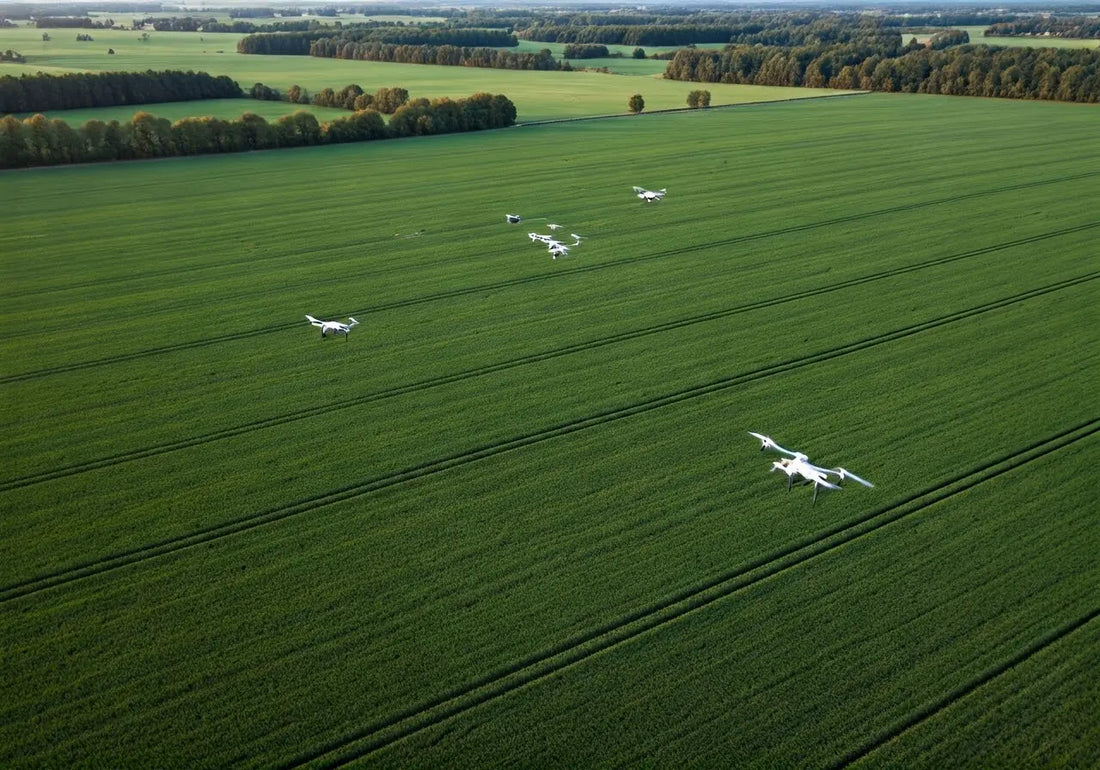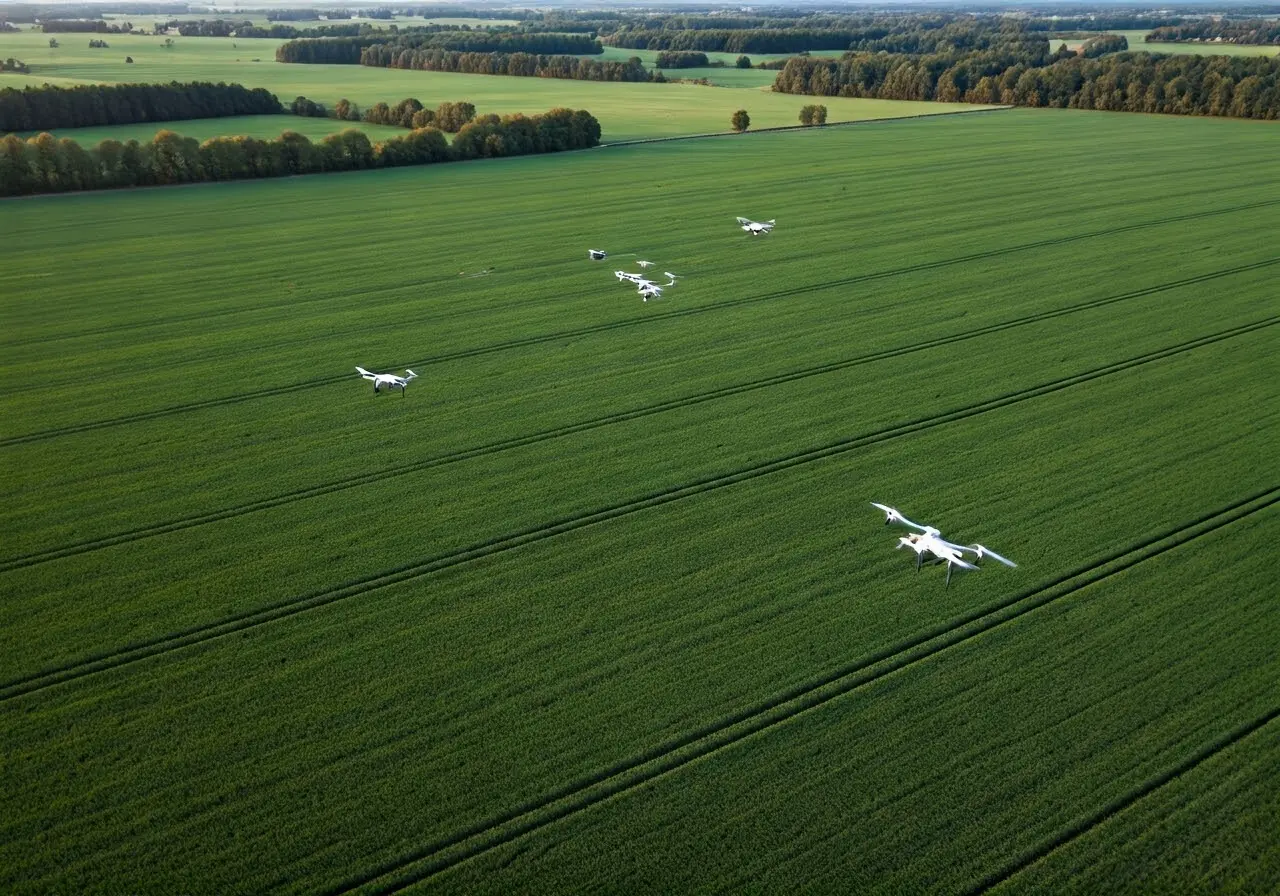
Unleashing the Potential of Agricultural Drones in Modern Farming
Share
In recent years, technology has significantly transformed many industrial sectors, and agriculture is no exception. As the world strives to meet the growing food demands of an increasing population, modern farming practices have evolved with the help of innovative tools. One such tool that is leading the charge in revolutionizing farming is the agricultural drone. In this article, we’ll explore how these advanced devices are being harnessed to boost efficiency, productivity, and sustainability in agriculture.
The Rise of Agricultural Drones
Agricultural drones have quickly moved from being a novelty to a necessity in modern farming. As these drones become more affordable and accessible, farmers are increasingly turning to them for a variety of applications. This shift illustrates a broader trend towards embracing technology to improve efficiency and productivity in agriculture.
Technology adoption in farming has witnessed remarkable growth, driven majorly by the promise of efficiency and improved management. Drones, with their capability to traverse wide farm areas quickly, bring an unmatched perspective to agricultural management. Initially, their use was limited to hobbyists and large-scale operations, but now, even small and medium-scale farms are utilizing them. The reduction in operating costs and increased range of functionality are key factors in this proliferation, highlighting how the landscape of agriculture is changing. Exploring the potential of drones increases the understanding of how farms can become more resilient and smarter in their operations.
How Drones Are Revolutionizing Crop Monitoring
One of the most significant impacts of agricultural drones is in the area of crop monitoring. Drones equipped with advanced sensors and cameras provide farmers with real-time data and insights. This allows for better crop management, early disease detection, and improved resource allocation, ultimately leading to healthier crops and higher yields.
The use of drones in crop monitoring provides an aerial view that was once only possible through manned flights or satellites. This high-resolution imagery and thermal imaging help farmers precisely assess crop health and spot variations that may indicate problems such as nutrient deficiencies or pest infestations. Such insights are crucial in implementing timely interventions to prevent crop losses. Moreover, by analyzing the growth stages and identifying stress in crops earlier than traditional methods, farmers can improve their harvest predictions and manage expectations better, leading to enhanced market planning and reduced wastage.
Drones also facilitate efficient crop monitoring by reducing the time it takes to gather field data. Traditionally, crop monitoring could take hours or even days; now, drones can cover the same ground in a fraction of the time, providing immediate access to vital statistics. This real-time capability is pivotal during crucial growing periods when quick decisions can save a harvest. You can take advantage of this technology by integrating drone data with existing management systems, creating a seamless flow of information that enhances decision-making efficiency.
Precision Agriculture: Enhancing Efficiency and Sustainability
Drones play a critical role in precision agriculture by enabling targeted interventions. They provide precise information about soil conditions, crop health, and irrigation needs. This data-driven approach ensures that resources such as water, fertilizers, and pesticides are used optimally, reducing waste and minimizing the environmental impact of farming.
In the realm of precision agriculture, drones offer a revolutionary way to apply inputs more precisely. Their ability to map fields at a detailed level enables farmers to apply fertilizers or pesticides only where needed, dramatically cutting down on excessive use and reducing environmental footprints. By leveraging drone data, farmers can tailor their approaches to specific zones within their fields, rather than applying resources uniformly, which can lead to over-application and wastage. This zonal application method not only conserves inputs but also bolsters the farm’s overall sustainability.
The sustainability aspect of precision agriculture is significantly enhanced by drone technology. For example, drones can perform 3D mapping and soil analysis accurately, providing farmers with in-depth insights into their land’s micro-environments. This enables practices such as variable rate planting, which optimizes seed density based on soil characteristics, increasing growth efficiency and yield potential. Furthermore, by minimizing over-application of resources and maximizing efficiency, farmers contribute to conserving surrounding ecosystems and reducing their carbon footprint, aligning with global sustainability goals.
Overcoming Challenges and Embracing Opportunities
While the potential of agricultural drones is undeniable, there are challenges to their widespread adoption, such as regulatory hurdles and the need for proper infrastructure and training. However, by overcoming these obstacles, the agricultural sector can reap significant benefits. This involves collaboration between farmers, technology providers, and policymakers to create a conducive environment for the integration of drone technology.
One of the primary barriers to the adoption of agricultural drones is the regulatory environment, which varies widely by region and affects how drones can be used commercially. Farmers must navigate complex legal landscapes that govern drone operations, including airspace restrictions and privacy concerns. Despite these challenges, regulations are gradually evolving to accommodate advancements in drone technology. As farmers, understanding and engaging in conversations with policymakers can help shape regulations that benefit both innovation and security.
Training and education are equally crucial in overcoming the hurdles of drone technology adoption in agriculture. Many farmers may lack the technical expertise required to operate drones or analyze the data they collect. Offering training programs and workshops can bridge this knowledge gap, ensuring that farmers are not only familiar with the technology but confident in using it to its full potential. Efforts like these are essential in unlocking the opportunities drones present, such as detailed farm assessments or precise crop treatment recommendations, thereby enhancing farming practices across various scales.
The Future of Farming with Drone Technology
As drone technology continues to evolve, so too will its applications in agriculture. Innovations such as AI-driven analytics and automated flight paths are set to further enhance the capabilities of drones. Looking ahead, these advancements promise to solve many of today’s agricultural challenges, paving the way for a more productive and sustainable future.
The integration of artificial intelligence with drone technology holds revolutionary potential for the future of agriculture. By incorporating AI, drones can analyze data on-the-fly, enabling adaptive responses to dynamic field conditions. This means that drones can potentially autonomously detect issues such as pest infestations or plant diseases and administer treatments independently, a scenario that offers tremendous time and cost savings to farmers. As AI algorithms become more sophisticated, they will likely enable even more precise predictive modeling, helping farmers anticipate and mitigate risks before they turn into significant problems.
Looking to the future, drones could play a critical role in an interconnected agricultural ecosystem. Imagine drones collaborating with ground-based sensors and satellites in a synchronized manner to create comprehensive farm management systems. This collaboration enables the constant flow of information and adjustments in real time, offering unprecedented levels of control and efficiency. As part of this ecosystem, drones could optimize every aspect of farm operations, from planting and watering to harvesting, aligning perfectly with the vision of smart farming where technology seamlessly integrates to boost productivity and maintain environmental balance.
The Future of Farming: Embracing the Sky-High Potential of Drones
Agricultural drones are proving to be invaluable assets in modern farming, offering solutions to many of the challenges faced by farmers today. From precise land monitoring to efficient crop management, the potential of these drones is immense. As technology continues to advance, so will the capabilities of these flying assistants, promising a future where farming is more productive, efficient, and sustainable than ever before. By embracing this technology, farmers can unlock new levels of precision and insight, ensuring better yields and healthier crops for generations to come. To learn more about innovative farming solutions, visit our homepage.

